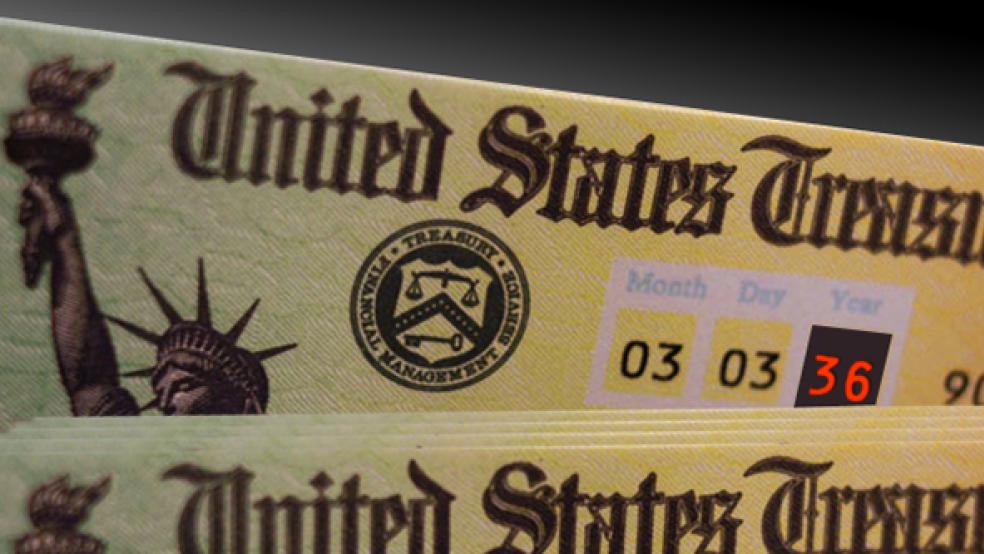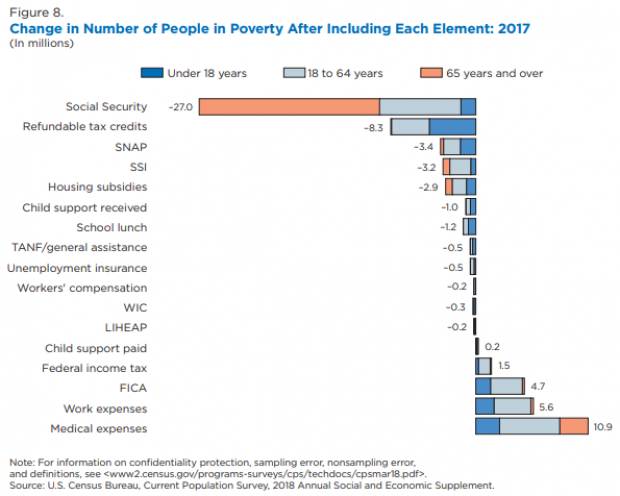Since 2011, the U.S. Census Bureau has produced a more sophisticated measure of poverty that, among other things, includes the income effects of government assistance programs such as Social Security and the Earned Income Tax Credit. Introduced in response to extensive criticism of the standard poverty measure, which fails to recognize the important role federal assistance programs play in lifting people’s standard of living, the Supplemental Poverty Measure tends to show lower rates of poverty for some demographic groups, such as children, but a higher rate overall.
According to the SPM released by the Census this week, the poverty rate in the U.S. held steady in 2017 at 13.9 percent, statistically unchanged from 14.0 percent in 2016. By comparison, the standard poverty rate for 2017 reported this week was 12.3 percent, down 0.4 points from 2016.
The SPM highlights the role of government programs in reducing poverty in the U.S. According to this year’s report, in 2017:
- Social Security kept 27.0 million people out of poverty.
- Refundable tax credits (including the Earned Income Tax Credit) kept 8.3 million people out of poverty.
- Food stamps (SNAP) kept 3.4 million people out of poverty.
- Housing subsidies kept 2.9 million people out of poverty.
- Unemployment insurance kept 542,000 people out of poverty.





